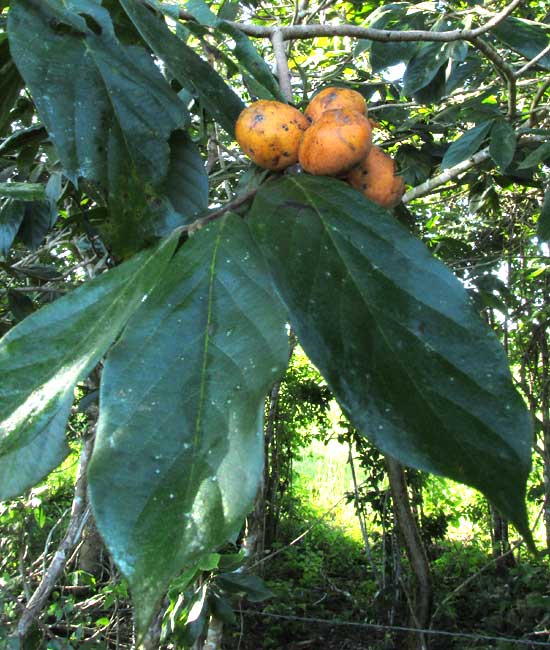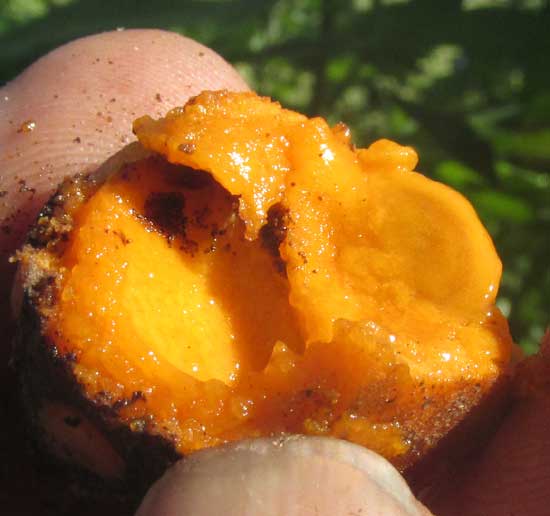Excerpts from Jim Conrad's
Naturalist Newsletter
from the October 30, 2016 Newsletter issued from Rancho Regenesis in the woods ±4kms west of Ek Balam Ruins; elevation ~40m (~130 ft), N20.876°, W88.170°; north-central Yucatán, MÉXICO
"YATES'S PERSIMMON"
Which species persimmon tree is shown below?

That's the branch of a tree about ten feet tall (3m) along the woodland trail through the forest to the Rancho. With the fruit's color, texture and size, what could it be but a persimmon? Breaking open the fruit, inside were several seeds just like a persimmon is supposed to have, and the custardy flesh tasted more or less like persimmon. The opened fruit is shown below:

Seven persimmon species -- seven species of the genus Diospyros -- are listed for the Yucatan, so which is our roadside tree? On the Internet, no pictures of the fruits of several of the seven species could be found, and fruits shown didn't look like ours. However, the online Flora Mesoamericana provided a written key to species of the genus Diospyros, and with that and the list of species published for the Yucatan, with fair certainty our little tree seems to be DIOSPYROS YATESIANA, a species endemic just to the Yucatan, Guatemala and Honduras. It has no English name but with that binomial nobody should complain about calling it "Yates's Persimmon."
The Internet provides pictures of leaves and flowers for Yates's Persimmon, but not mature fruits on a living tree, so possibly our pictures will be appreciated by future researchers.
The main feature the ID is based on is the fact that on this tree several mature fruits cluster together, not just one or two in leaf axils, as with most persimmon species. The Flora Mesoamericana description of the species indicates that it's similar to the species Diospyros campechiana, which doesn't occur here, but which also bears clusters of several fruits. Also, the fruits on our tree are almost "sessile" -- without a fruit stem, unlike most other species. And, on the fruits of most persimmon species there's a conspicuous, much enlarged, semi-woody calyx subtending the fruit, but on this one there's no room for such a calyx. The calyx shows up as a blackish spot beneath the fruit.